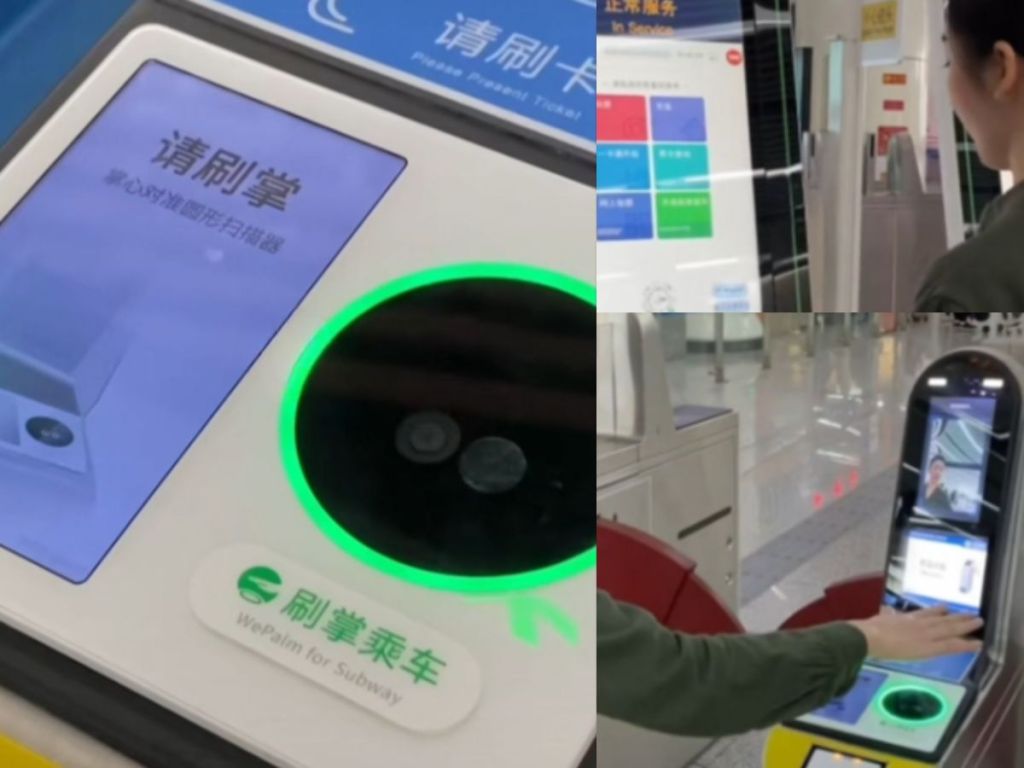Folks, palm payment has arrived. Yes, that absolutely mental part of the human timeline has arrived whereby you can pay for anything using your palm. Forget your phone, your watch, a chip being inserted into your wrist. That’s all old news. Now you can pay just with your damn bare hand.
Chinese tech giant Tencent has reportedly rolled out the first mass public iteration of palm payment technology. Linking it to the country’s ubiquitous WeChat Pay platform, the platform is reportedly giving passengers on the Beijing subway system the ability to tap on and off by simply hovering their hand above a payment reader. The person’s registered biometric data does the rest.
This new tech is magnificently demonstrated by a Chinese-State-controlled TikTok account called Frontline Focus which says it offers “News on China, from China, with a non-western-media perspective.”
Dubbed “Palm Payment”, the new method of identification and payment is an offering by Tencent’s WeChat Pay. Recognition of a unique palm print (read by the lines in your skin and the veins underneath it, ew) will automatically trigger a payment through the passenger’s WeChat account.

What is WeChat?
WeChat is an “everything app” in China, covering social media, payment services, voice and video calls, and it is hugely popular. It has over a billion monthly active users and is deeply integrated into the daily lives of many Chinese people, serving as a messaging app, social media platform, mobile payment tool, and more.
Now, all you need to pay for something is a wave of your hand, with the system theoretically about to be applied to every retail environment.
This crazy tech was developed by the YouTu artificial intelligence lab (right click and choose “translate to English” when opening this page). It relies on recognising palm prints but also, more creepily, the veins in the hands.
Opal Card Not Needed?
This news may be exciting to one Sydney commuter. A man by the unusual name of Meow-Ludo Disco Gamma Meow-Meow had a chip from a Sydney Opal Card (used to gain access to the transport network) implanted in his hand. Which of course is a totally normal thing to do.
Calling himself a “biohacker”, he found that the Opal chip worked perfectly well and he carried on with his life.
Alas. He was soon charged with fare evasion, for failing to produce his Opal card when inspectors asked him for it, even though he had indeed paid for his fare using the chip. In the end, Meow-Meow challenged the fine in court and had the case against him dismissed, but his aim – to open a discourse around the boundaries of technology and human-machine interaction – was fulfilled.
While this happened only a few years ago, the need to implant anything, anywhere is already obsolete, thanks to the palm payment system.

Who can use palm payment?
The service is available to people in mainland China who have completed identity verification. But of course, the plan is that it will soon hit offices, universities, retail outlets, and restaurants.
This type of payment system using body parts is not really a new idea in China, as citizens have been able to pay with facial recognition for many years. But this is certainly a new iteration of using biometric data to cough up your hard-earned funds.
There are some seriously tempting conveniences involved here. The time has come where if you phone has died on the way home, you can still pay with your hand, and you don’t get trapped inside a train station forever. But is it worth handing over your biometric data?
The idea raises the same discomfort in commentators that Worldcoin does, when it asks users to scan their eyeball to get onto the system. How far is too far when handing over our biometric data?
Strangely, in the US, Amazon have been all over palm payment for a while, but it hasn’t seemed to have taken off, for now. But this is all barrelling down from the future at us.
Seems like the tech is a done deal… so get those veins ready tech lovers, we are going live.



